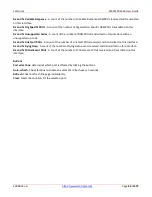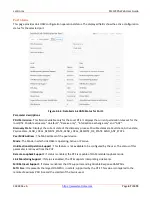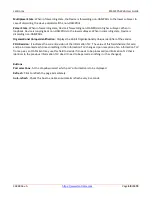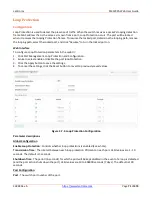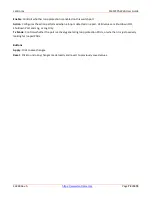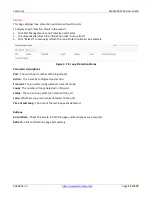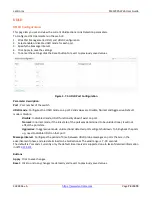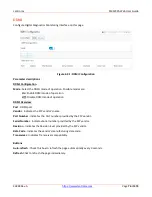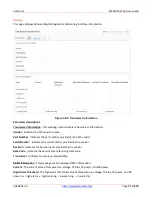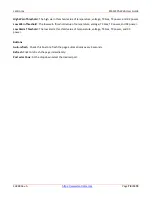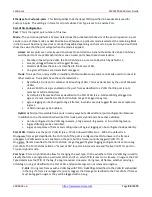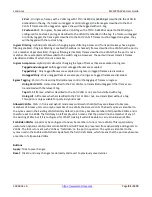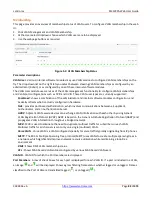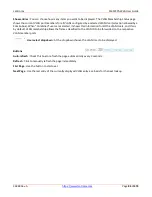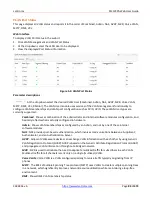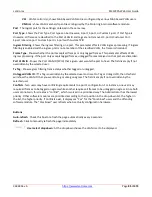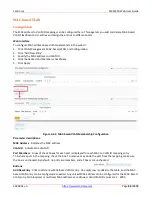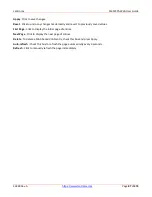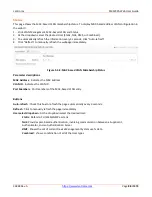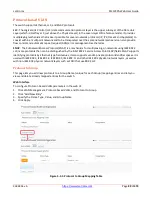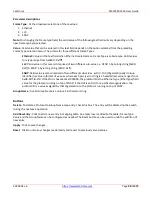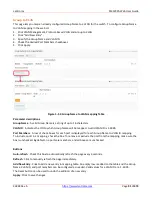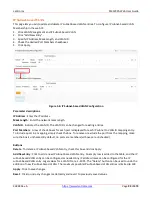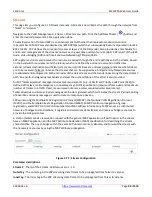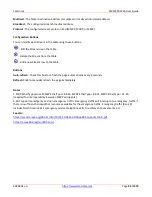
Lantronix
SM12XPA Web User Guide
33848 Rev. A
Page
80
of
473
Ethertype for Custom S-ports
: This field specifies the Ethertype/TPID (specified in hexadecimal) used for
Custom S-ports. The setting is in force for all ports whose Port Type is set to S-Custom-Port.
Port VLAN Configuration
Port
: This is the logical port number of this row.
Mode
: The port mode (default is Access) determines the fundamental behavior of the port in question. A port
can be in one of three modes as described below. Whenever a particular mode is selected, the remaining fields
in that row will be either grayed out or made changeable depending on the mode in question. Grayed out fields
show the value that the port will get when the mode is applied.
Access
: Access ports are normally used to connect to end stations. Dynamic features like Voice VLAN may
add the port to more VLANs behind the scenes. Access ports have these characteristics:
•
Member of exactly one VLAN, the Port VLAN (a.k.a. Access VLAN), which by default is 1,
•
accepts untagged frames and C-tagged frames,
•
discards all frames that are not classified to the Access VLAN,
•
on egress all frames are transmitted untagged.
Trunk
: Trunk ports can carry traffic on multiple VLANs simultaneously and are normally used to connect to
other switches. Trunk ports have these characteristics:
•
By default, a trunk port is member of all existing VLANs. This may be limited by the use of Allowed
VLANs,
•
unless VLAN Trunking is enabled on the port, frames classified to a VLAN that the port is not a
member of will be discarded,
•
by default, all frames but frames classified to the Port VLAN (a.k.a. Native VLAN) get tagged on
egress. Frames classified to the Port VLAN do not get C-tagged on egress,
•
egress tagging can be changed to tag all frames, in which case only tagged frames are accepted on
ingress,
•
VLAN trunking may be enabled.
Hybrid
: Hybrid ports resemble trunk ports in many ways but adds additional port configuration features.
In addition to the characteristics described for trunk ports, Hybrid ports have these abilities:
•
Can be configured to be VLAN tag unaware, C-tag aware, S-tag aware, or S-custom-tag aware,
•
ingress filtering can be controlled,
•
ingress acceptance of frames and configuration of egress tagging can be configured independently.
Port VLAN
: Determines the port's VLAN ID (a.k.a. PVID). Allowed VLANs are 1 - 4095, the default is 1.
On ingress, frames get classified to the Port VLAN if the port is configured as VLAN unaware, the frame is
untagged, or VLAN awareness is enabled on the port, but the frame is priority tagged (VLAN ID = 0).
On egress, frames classified to the Port VLAN do not get tagged if Egress Tagging configuration is set to untag
Port VLAN. The Port VLAN is called an "Access VLAN" for ports in Access mode and “Native VLAN” for ports in
Trunk or Hybrid mode.
Port Type
: Ports in hybrid mode allow for changing the port type, that is, whether a frame's VLAN tag is used to
classify the frame on ingress to a particular VLAN, and if so, which TPID it reacts on. Likewise, on egress, the Port
Type determines the TPID of the tag, if a tag is required. Unaware: On ingress, all frames, whether carrying a
VLAN tag or not, get classified to the Port VLAN, and possible tags are not removed on egress.
C-Port
: On ingress, frames with a VLAN tag with TPID = 0x8100 get classified to the VLAN ID embedded
in the tag. If a frame is untagged or priority tagged, the frame gets classified to the Port VLAN. If frames
must be tagged on egress, they will be tagged with a C-tag.

